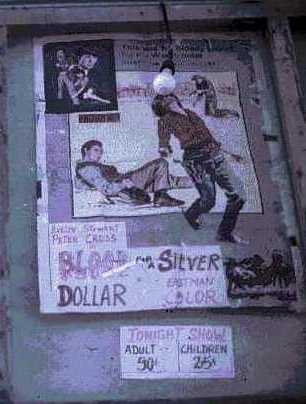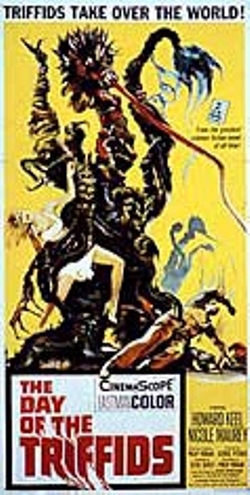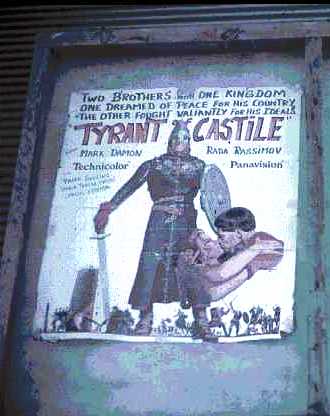A Cinéaste Grows on Yap
I started watching films more seriously the year before I went to Yap. That was the same year I spent as a first-year law student at the University of Virginia, and the two things were not unrelated. In fact, the former was a direct consequence of the latter.
The truth is, law and I were not a good match.
I did try for a while to be a good student; I really did. But gradually I began to do fewer and fewer of the things a good student does, and more and more of the things he doesn’t. I tried to fill up my ever increasing amounts of free time with worthwhile projects, but there wasn’t an awful lot to do in Charlottesville if you weren’t going to school.
So I admired the architecture for a while. I drove around the countryside for a while. I even sneaked out to the airport for a while and watched longingly as Piedmont’s new Boeing 727 touched down on its daily trip from Raleigh-Durham to LaGuardia. But even I began to realize how pathetic that was after the first twenty or so times I did it.
Fortunately, late in the fall of 1967 I discovered the UVa Film Society and, finally, I began to learn something in Charlottesville.
Three films I saw that year stand out in my memory. One was James Whale’s Frankenstein, with Boris Karloff in a performance that was as moving as it was surprising. Another was the epic silent film Intolerance, D.W. Griffith’s towering depiction of man’s inhumanity to man throughout the ages. And the third was that wildly improbable ode to the Old West as no one who lived it could ever have known it: My Little Chickadee, a film with some of the funniest lines, and some of the funniest deliveries of those lines, ever spoken on screen. Once I’d seen W.C. Fields and Mae West as Cuthbert J. Twillie and Flowerbelle Lee, I knew I’d found the only two role models I would ever need in life. “What would W.C. say? How would Mae handle this?” became guiding principles that I follow even today.
No wonder people think I’m strange.
At the end of the spring term of 1968, I left Charlottesville in more or less complete academic disgrace, and went to Yap a few weeks later, fully expecting not to see another movie for the next two years.
I couldn’t have been more wrong about that: I didn’t see a lot of movies on Yap, it’s true, but I did see movies.
Most of them weren’t very good, of course. They always seemed to be well past their original release dates. If they’d been food, you could have died from ingesting them. But, oddly enough, their staleness—and in some cases, their downright rottenness—hardly ever seemed to matter. Nine times out of ten, when you saw a movie on Yap, the movie itself played only a small part in the overall entertainment experience.
There was only one theater on the island when I lived there, right in the center of Colonia, next to the Yap Cooperative Association, which owned it. To American eyes, it didn’t look like much; in fact, it didn’t look like anything at all: it had four walls, to be sure, but no roof, no seats, and a total size of maybe two or three hundred square feet. When you saw a movie there, you sat close together on the hard ground, under an unreliable sky, and played a game of chance with the film, the audience, the projector, and the elements. The audience hardly ever lost—even if the projector broke down, or the film caught fire, or the rain came down in buckets.
The cinematic fare was pretty traditional, refracted as it was through the lens of the American trustee’s worldview. We saw World War II films, spaghetti westerns, and medieval battle epics with “meaningful” themes. One of my favorite photographs (appearing in two parts over on the right here) in the Trust Territory Image Archive at the University of Hawaii shows the marquee of the YCA theater on a day in the late 1960s. Playing that night was a double feature typical of the time: The Tyrant of Castile (“Two Brothers, One Kingdom: One Dreamed of Peace for His Country, the Other Fought Valiantly for His Ideals”) and Blood for a Silver Dollar (ex-Confederate Army captain, tricked by bad guys into killing his brother, starts his own personal crusade to bring justice to the West). Probably neither of those films was as bad as you might be thinking; but even if it had been, at 50 cents and 25 cents a pop (adults and children respectively) for a double feature, you could hardly complain.
Or you could, but it would have been churlish.
I wish I’d seen The Tyrant of Castile. I bet it would have been a whole lot better than the medieval epic I actually did see at that theater. Not that the 1954 Prince Valiant—with Robert Wagner in a page-boy wig, and dozens of freshly scrubbed, brightly dressed peasants running around the brilliant Technicolor countryside—was an absolutely terrible film. It was just completely unbelievable on any level except the level of total camp. Seen from that perspective, it was a riot. Or at least that’s how I’ve always remembered it. Maybe that’s because I went to see it with Sandy Johnson, one of my best Peace Corps pals on Yap. If you were lucky enough to have known Sandy, you’ll remember what a good friend and terrific person she was: always ready to smile; always ready to laugh; always ready to help out, to chip in, to take part in any lame-brained adventure that might be going down, no matter how uncertain or dubious the outcome. The night we went to see Prince Valiant, Sandy—and here’s where the YCA theater had it all over any movie house in the US by a long, long shot—stashed a bottle of Tia Maria away in her wai. By the time the film was over, we had laughed ourselves silly and the bottle of Tia Maria was—oh, gosh, now how could that have happened?—empty. If you’d asked me at that moment what I thought about the movie I’d just seen, I'm pretty sure I would have said, “Greatest film since Ben-Hur!” And I honestly think I would have meant it.
The Coast Guard guys at the Loran Station out in Tomil got the real movies, though: more or less recent releases, flown in from Guam on the Coast Guard’s C-123 supply runs. Sometimes they’d share those films with villages and schools. That’s how I came to see The Sound of Music, if you can believe it, three times at the high school. And I have to tell you that, until you’ve seen The Sound of Music on a hot, humid night on Yap, you really haven’t seen The Sound of Music at all.
“Climb Every Mountain” indeed.
I’m not sure how we managed to get it so soon after it was released, but the hands-down best film I saw while I was on Yap—and a film that achieved more levels of meaning than you would have thought possible, from being seen as an American in Micronesia—was John Boorman’s 1968 Hell in the Pacific, with Lee Marvin and Toshirô Mifune in the starring, and only, roles. A sly little comedy filmed only a few hundred miles away in the Palau chain, the movie told the story of two wartime enemies marooned on an uninhabited island in the Pacific. As each tries to decide whether to kill the other or work together with him in order to try to get off the island, their resulting actions are constantly hampered by the fact the neither understands a word the other is saying. Don’t ask me why that film resonated so particularly with at least one Peace Corps Volunteer I knew who went to bed almost every night thinking, "God, I'm never going to learn to speak Yapese."
The film that made the most enduring impression on me—and I'm telling you now you'd better not laugh, because I’m being totally serious—was Steve Sekely’s The Day of the Triffids, with a badly miscast Howard Keel as the hero. If you know the film (and I completely understand if you don't; your loss, though), you know that a meteor shower not only blinds most of the inhabitants of earth, it brings in its wake ambulatory man-eating plants called triffids. The special effects in the film are ludicrous by today’s standards (in some shots, you can actually see the wheels the triffids are being rolled around on). If you were watching it tonight,sitting in your cozy den with lots of lights and plenty of electricity, I don’t think there’s a thing in it that would scare you in the least . . . except maybe Howard Keel’s acting. But I saw that film under entirely different circumstances, in the community center of a remote village, with only a small generator to supply current for the projector and a few kerosene lanterns to provide just enough ambient lighting for tuba-drinking and betel-nut-chewing. What made the film so terrifying to me—and I admit that I’ve always been abnormally suggestible—was the fact that the triffids in the movie looked just like big taro plants. Swear to God! And Yap was overrun with them: there were taro patches on either side of practically every pathway on the island! Intellectually, I knew there weren’t triffids on Yap; but on a purely emotional, gut-wrenching level, until I said goodbye to Yap forever, I never got over the fear that taro plants would rise up from their watery beds, surround me and, with a terrible gurgling, burbling, slurping sound, plunge their non-existent limbs into my scrawny little chest and suck the life right out of me as I walked home alone late at night.
Okay, now you can laugh.
Of the many things I learned in my time on Yap, here are a few of the things I learned about film:
“A theater with a roof isn’t necessarily the best place in the world to see a movie.”
“Where you see a film can have a profound effect on your appreciation of the film.”
“In the middle of the Pacific, the Alps look ridiculous; tropical islands do not.”
“You’ll enjoy a movie a whole lot more if you have to walk miles to see it.”
“Mosquitoes like movies as much as people do.”
“No guy looks good in a page-boy haircut.”
“Salt water kills man-eating plants from outer space. So if your planet is ever overrun by them, you have a decided advantage if you live near the ocean.”
“No movie is so bad it can’t be improved by seeing it with a really good friend and a fairly big bottle of booze.”
“If you have to choose, it’s better to see a really bad movie with a really good friend."
About law school, I learned this: "It's not for everyone. If your kid flunks out, don't bust a gut. Bite your tongue, slap a smile on your face, and act happy. After all, it could be the first step in a remarkable journey that might, just might be the making of him."
On the off chance you're a lawyer yourself, you didn't hear that from me: it's Mae talking.
She still does that sometimes.
Frank Glass
New York, NY
February 2006

Click here to add text.

Trust Territory Image Archive, University of Hawaii, Reel 1880

Trust Territory Image Archive, University of
Hawaii, Reel 1880
Poster for the movie
